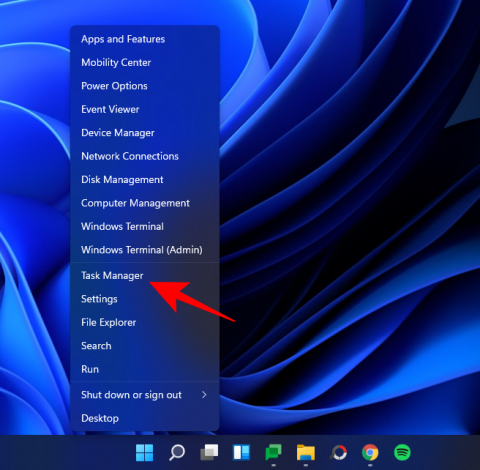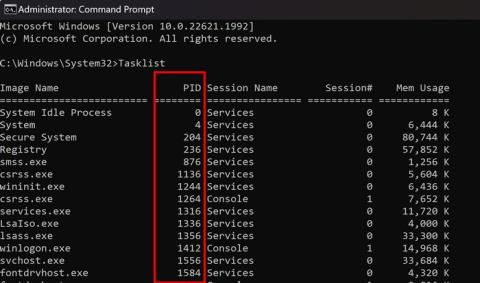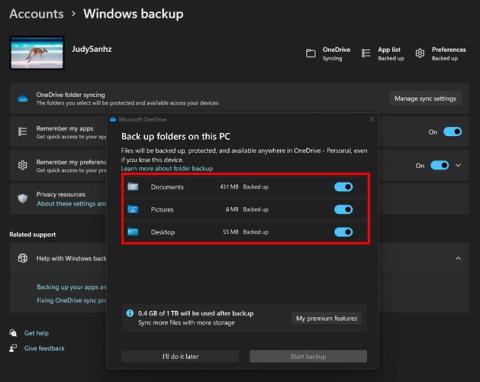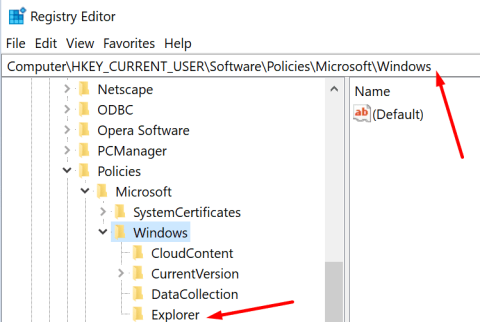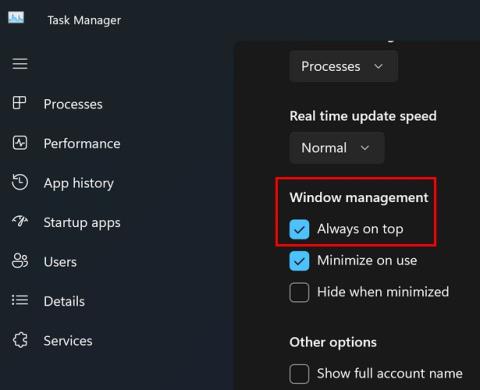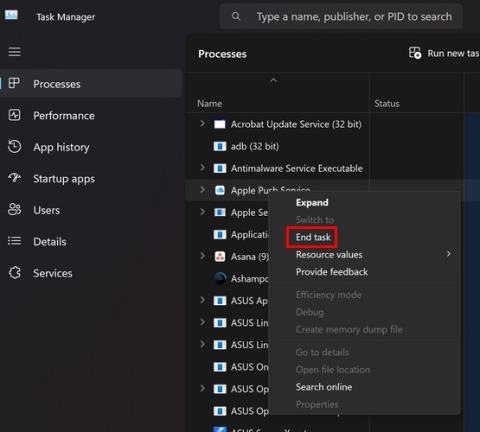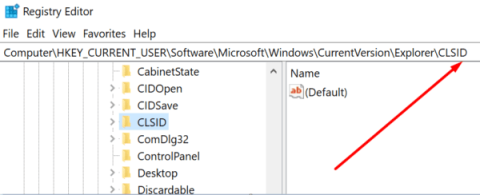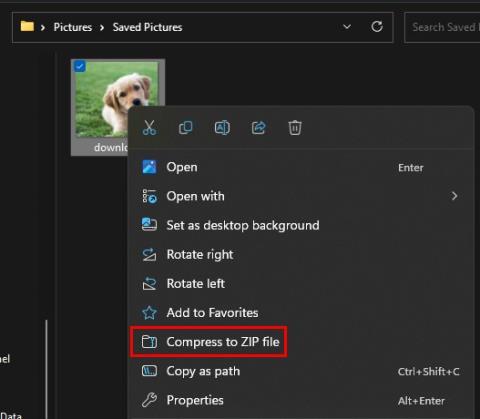
Windows Explorer é a porta de entrada á Interface Gráfica de Usuario (GUI) coa que navegamos polo sistema operativo Windows. É o shell do usuario que permite explorar o escritorio, o Xestor de ficheiros, o menú Inicio e a barra de tarefas, e unha serie de cousas relacionadas con el. En determinadas situacións, é posible que teñas que reinicialo, como cando un ou máis dos seus elementos comezan a fallar ou se a pantalla se conxela.
Con Windows 11, Microsoft apoiou moito o Explorador de Windows e "centralizou" toda a experiencia. Pero as formas de reinicialo seguen sendo as mesmas. Aquí botamos un ollo a como reiniciar o Explorador de Windows e que ocorre cando o fai.
Contidos
Que ocorre cando reinicias o explorador de Windows (e cando debes facelo)?
Reiniciar o Explorador de Windows é como reiniciar calquera outra aplicación: apaga o shell do usuario e reinicia de novo. Isto significa que todos os procesos que dependen del, como o escritorio, a barra de tarefas, o menú Inicio e o Explorador de ficheiros volverán cargarse, corrixindo así os pequenos problemas que puidesen haber. Se o teu sistema está conxelado ou atrasado, a miúdo é suficiente reiniciar o Explorador de Windows para resolver o problema.
É bo saber como facelo, xa que esta é unha das formas máis rápidas de arranxar unha experiencia de escritorio tartamudeada ou unha barra de tarefas que non responde. O Explorador de Windows tamén debe reiniciarse sempre que fagas cambios no rexistro HKEY_CURRENT_USER, que é outro motivo para saber como facelo.
Tamén pode simplemente finalizar o Explorador de Windows sen reinicialo. Se o fas, quedarás cun escritorio en branco sen barra de tarefas nin o menú Inicio. O explorador de ficheiros tampouco estará dispoñible. Pero comezalo de novo é moi sinxelo.
Relacionado: Como restablecer Windows 11
Reinicie o Explorador de ficheiros en Windows 11
Aquí tes todas as formas en que podes reiniciar o Explorador de Windows en Windows 11. Teña en conta que, aínda que as referencias visuais que se mostran nesta guía son de Windows 11, estes métodos tamén funcionan para Windows 10.
Método #01: Usando o Xestor de tarefas
Primeiro, abra o Xestor de tarefas premendo Ctrl + Shift + Escsimultaneamente. Alternativamente, tamén pode simplemente facer clic co botón dereito no menú Inicio e seleccionar Xestor de tarefas .
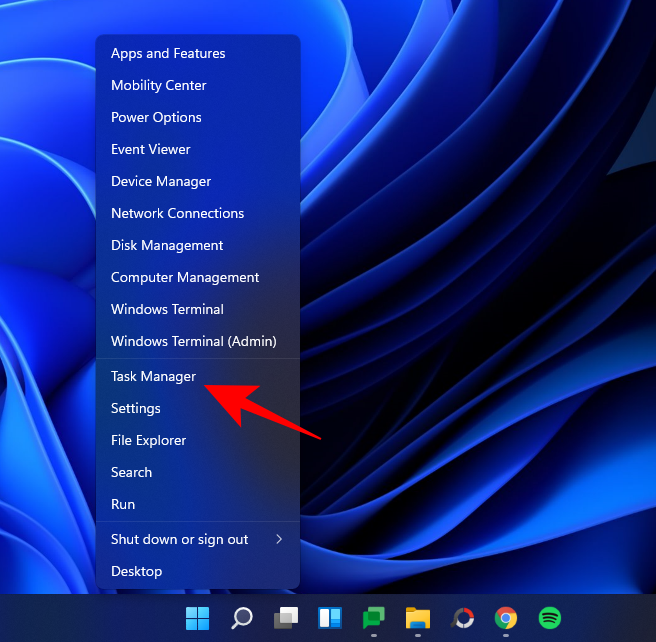
Fai clic en Máis detalles se o Xestor de tarefas se abre en miniatura.
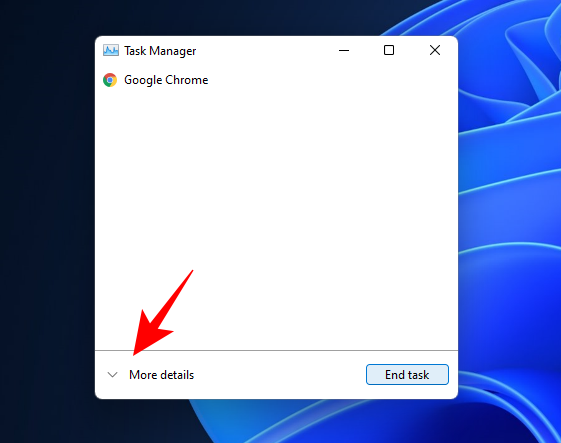
Desprácese polos Procesos e busque o Explorador de Windows. Selecciónao e fai clic en Reiniciar na esquina inferior dereita.

Os elementos visuais da túa pantalla desaparecerán momentaneamente e despois volverán. Isto significa que o Explorador de Windows pechou e reiniciouse correctamente.
Relacionado: Como desinstalar actualizacións en Windows 11
Método #02: Usando o símbolo do sistema/Terminal de Windows/PowerShell
Outra forma de reiniciar o Explorador de Windows é a través dun terminal de Windows como o símbolo do sistema ou o PowerShell. No noso exemplo, imos co primeiro pero os comandos son os mesmos para ambos.
Preme Inicio, escribe cmd (ou powershell) e fai clic en Executar como administrador .
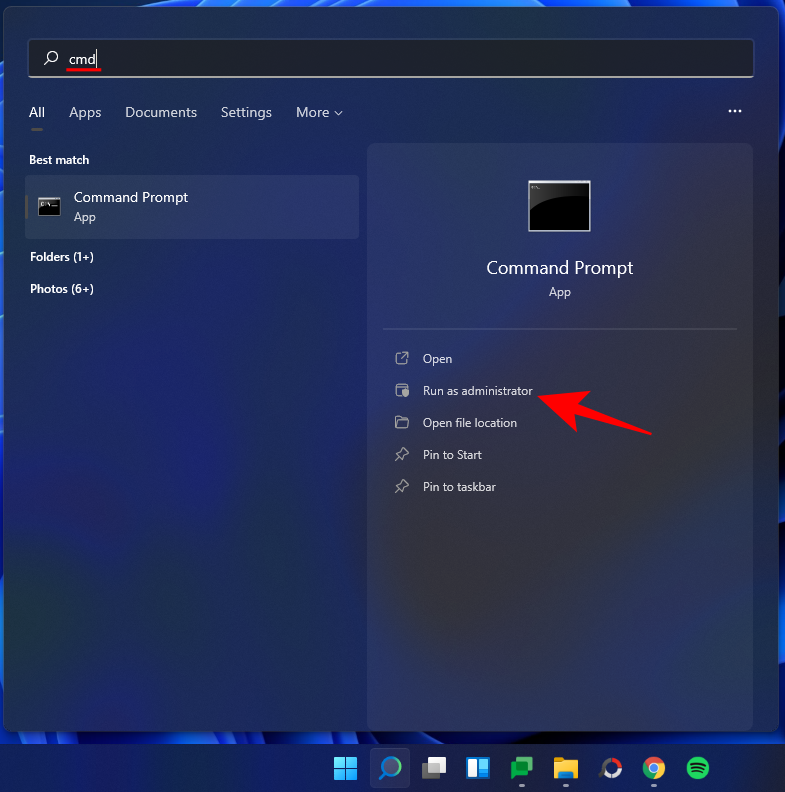
Agora escriba o seguinte comando:
taskkill /f /im explorer.exe

A continuación, prema Intro. Axiña que o fagas, verás o escritorio volverse negro e o menú Inicio e a barra de tarefas desaparecen. Isto significa que pechou correctamente o Explorador de Windows. Para inicialo de novo, escriba o seguinte comando:
start explorer.exe

A continuación, prema Intro. Os elementos visuais volverán pronto.
Método #03: Usando un script por lotes
Tamén pode crear un script por lotes para reiniciar o Explorador de Windows para que a próxima vez que necesite facelo só faga dobre clic nel. Aquí tes como:
Fai clic co botón dereito do rato no escritorio e selecciona Novo > Documento de texto .
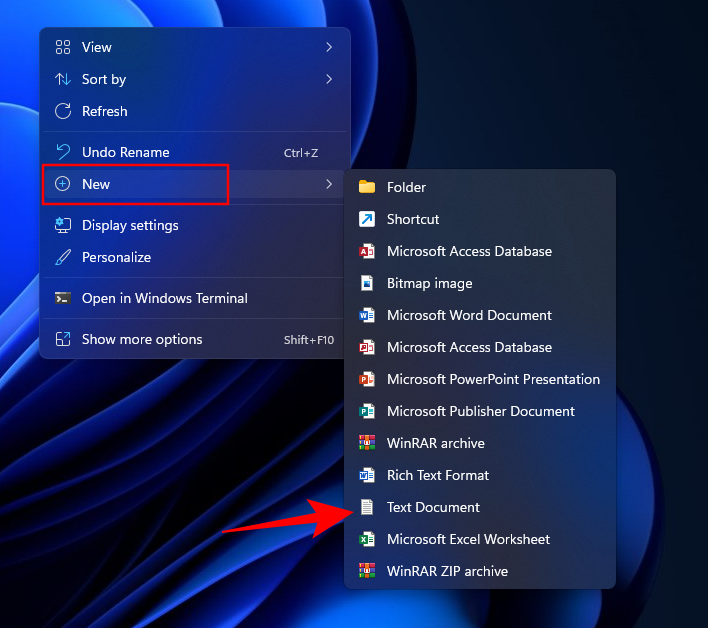
Abra este ficheiro do Bloc de notas e escriba o seguinte:
@echo off
taskkill /f /im explorer.exe
start explorer.exe
Alternativamente, pode copiar o anterior e pegalo no documento de texto.
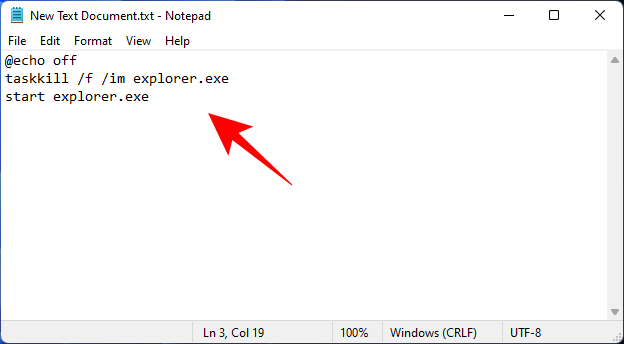
A continuación, fai clic en Ficheiro .
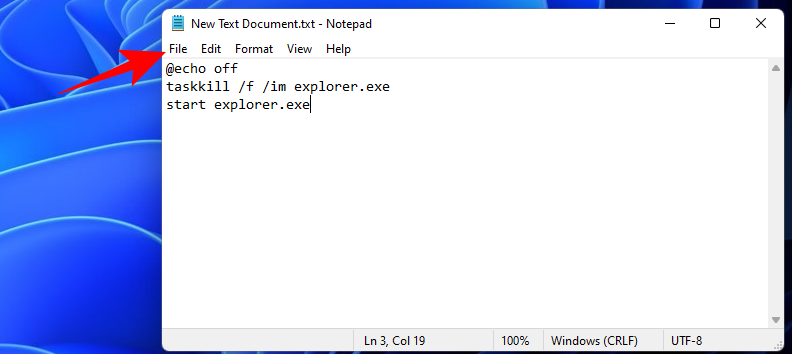
Seleccione Gardar como .
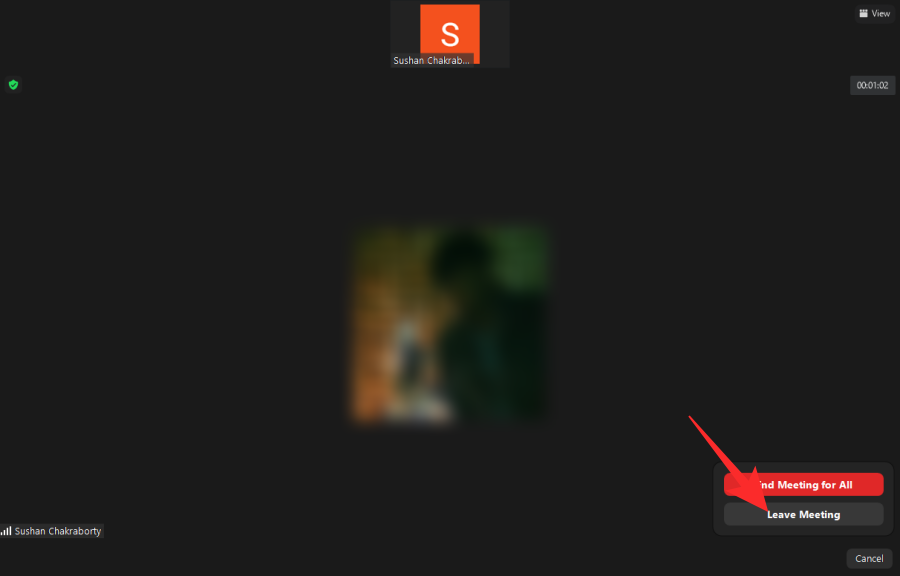
Dálle un nome a este ficheiro e garda as súas extensións como .bat . A continuación, fai clic no menú despregable xunto a Gardar como tipo .
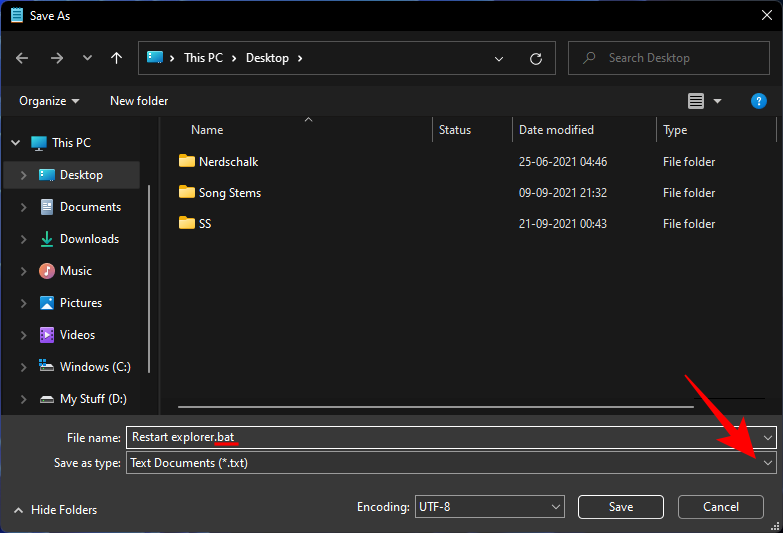
Seleccione Todos os ficheiros .
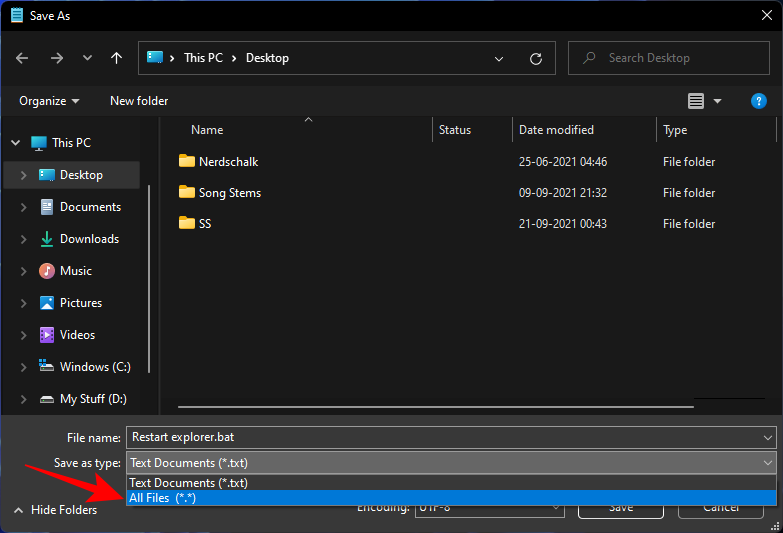
A continuación, fai clic en Gardar .
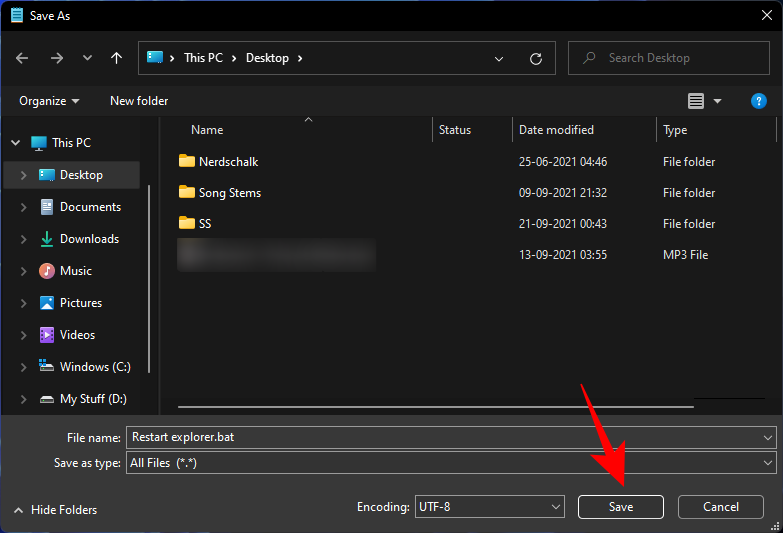
O teu ficheiro por lotes para reiniciar o Explorador de Windows agora está creado no escritorio. Sempre que necesites reiniciar o Explorador de Windows, simplemente fai dobre clic neste ficheiro .bat.
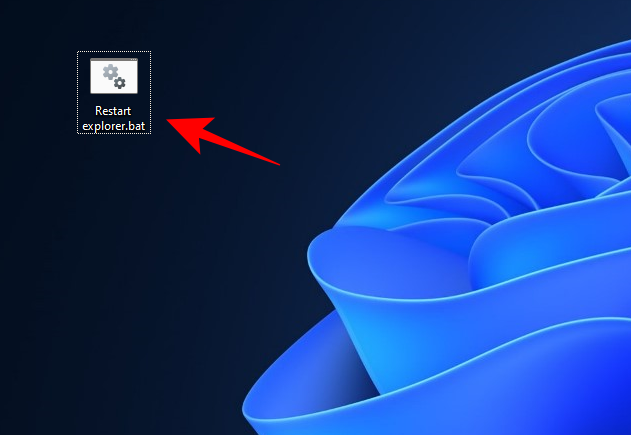
If the aforementioned methods seem too elaborate to you, you can add an option to restart Windows Explorer to the context menu for easier access. However, to do so, you’ll have to create a registry file specific to the task. Here’s how to go about it:
Open a text document (Notepad file) as shown before. Then type the following:
Windows Registry Editor Version 5.00
[HKEY_CLASSES_ROOT\DesktopBackground\Shell\Restart Explorer]
"icon"="explorer.exe"
"Position"="Bottom"
"SubCommands"=""
[HKEY_CLASSES_ROOT\DesktopBackground\Shell\Restart Explorer\shell\01menu]
"MUIVerb"="Restart Explorer Now"
[HKEY_CLASSES_ROOT\DesktopBackground\Shell\Restart Explorer\shell\01menu\command]
@=hex(2):63,00,6d,00,64,00,2e,00,65,00,78,00,65,00,20,00,2f,00,63,00,20,00,74,\
00,61,00,73,00,6b,00,6b,00,69,00,6c,00,6c,00,20,00,2f,00,66,00,20,00,2f,00,\
69,00,6d,00,20,00,65,00,78,00,70,00,6c,00,6f,00,72,00,65,00,72,00,2e,00,65,\
00,78,00,65,00,20,00,20,00,26,00,20,00,73,00,74,00,61,00,72,00,74,00,20,00,\
65,00,78,00,70,00,6c,00,6f,00,72,00,65,00,72,00,2e,00,65,00,78,00,65,00,00,\
00
[HKEY_CLASSES_ROOT\DesktopBackground\Shell\Restart Explorer\shell\02menu]
"MUIVerb"="Restart Explorer with Pause"
"CommandFlags"=dword:00000020
[HKEY_CLASSES_ROOT\DesktopBackground\Shell\Restart Explorer\shell\02menu\command]
@=hex(2):63,00,6d,00,64,00,2e,00,65,00,78,00,65,00,20,00,2f,00,63,00,20,00,40,\
00,65,00,63,00,68,00,6f,00,20,00,6f,00,66,00,66,00,20,00,26,00,20,00,65,00,\
63,00,68,00,6f,00,2e,00,20,00,26,00,20,00,65,00,63,00,68,00,6f,00,20,00,53,\
00,74,00,6f,00,70,00,70,00,69,00,6e,00,67,00,20,00,65,00,78,00,70,00,6c,00,\
6f,00,72,00,65,00,72,00,2e,00,65,00,78,00,65,00,20,00,70,00,72,00,6f,00,63,\
00,65,00,73,00,73,00,20,00,2e,00,20,00,2e,00,20,00,2e,00,20,00,26,00,20,00,\
65,00,63,00,68,00,6f,00,2e,00,20,00,26,00,20,00,74,00,61,00,73,00,6b,00,6b,\
00,69,00,6c,00,6c,00,20,00,2f,00,66,00,20,00,2f,00,69,00,6d,00,20,00,65,00,\
78,00,70,00,6c,00,6f,00,72,00,65,00,72,00,2e,00,65,00,78,00,65,00,20,00,26,\
00,20,00,65,00,63,00,68,00,6f,00,2e,00,20,00,26,00,20,00,65,00,63,00,68,00,\
6f,00,2e,00,20,00,26,00,20,00,65,00,63,00,68,00,6f,00,20,00,57,00,61,00,69,\
00,74,00,69,00,6e,00,67,00,20,00,74,00,6f,00,20,00,73,00,74,00,61,00,72,00,\
74,00,20,00,65,00,78,00,70,00,6c,00,6f,00,72,00,65,00,72,00,2e,00,65,00,78,\
00,65,00,20,00,70,00,72,00,6f,00,63,00,65,00,73,00,73,00,20,00,77,00,68,00,\
65,00,6e,00,20,00,79,00,6f,00,75,00,20,00,61,00,72,00,65,00,20,00,72,00,65,\
00,61,00,64,00,79,00,20,00,2e,00,20,00,2e,00,20,00,2e,00,20,00,26,00,20,00,\
70,00,61,00,75,00,73,00,65,00,20,00,26,00,26,00,20,00,73,00,74,00,61,00,72,\
00,74,00,20,00,65,00,78,00,70,00,6c,00,6f,00,72,00,65,00,72,00,2e,00,65,00,\
78,00,65,00,20,00,26,00,26,00,20,00,65,00,78,00,69,00,74,00,00,00
To simplify the process, simply copy the above and paste it into the notepad file.
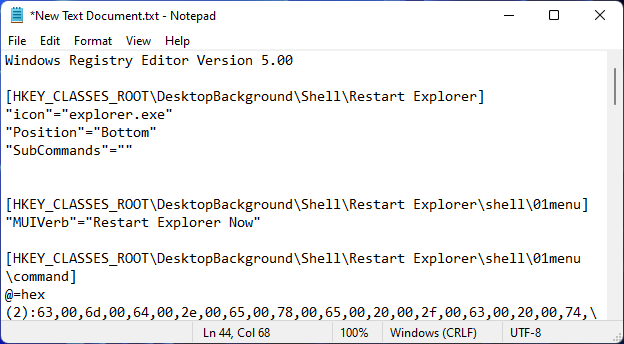
Then click on File.

Select Save as.
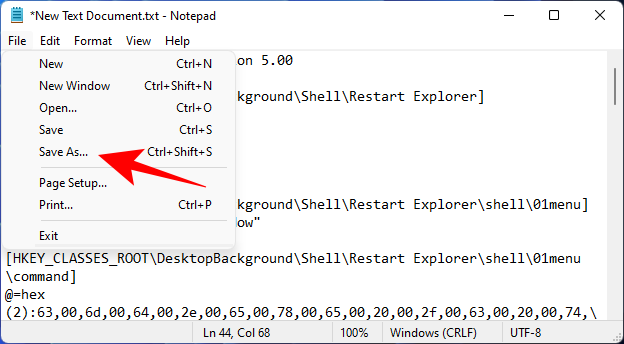
Give this file a name and end it with .reg. Then click on the drop-down menu next to Save as type.
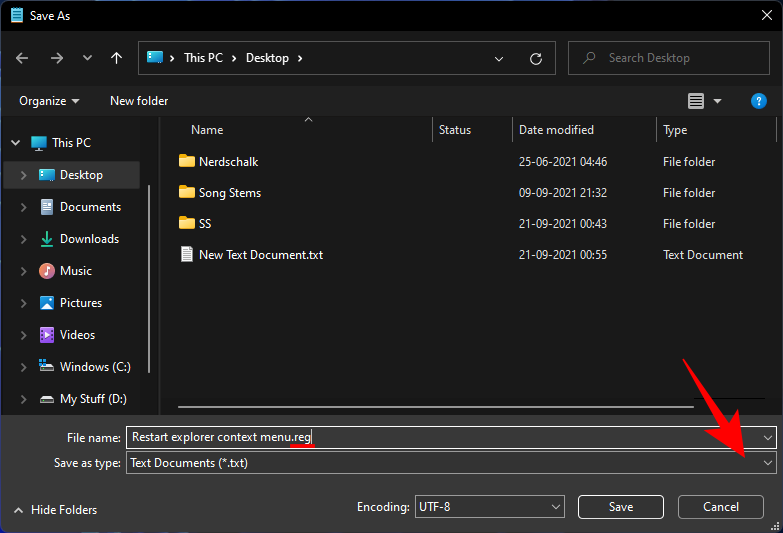
Select All Files.
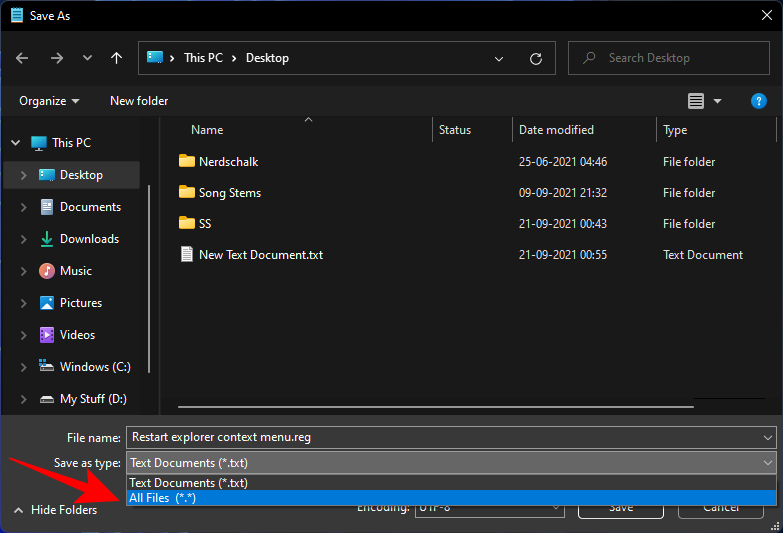
Click on Save.

Now double-click this newly created registry file.
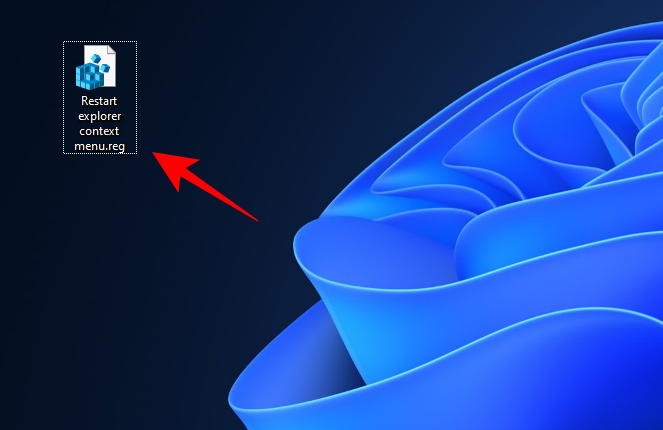
When prompted, click Yes.
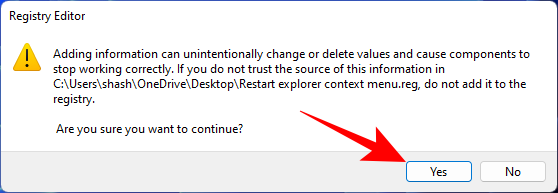
You will now get a confirmation message that the keys and values in this file are successfully added to the registry. Click OK.
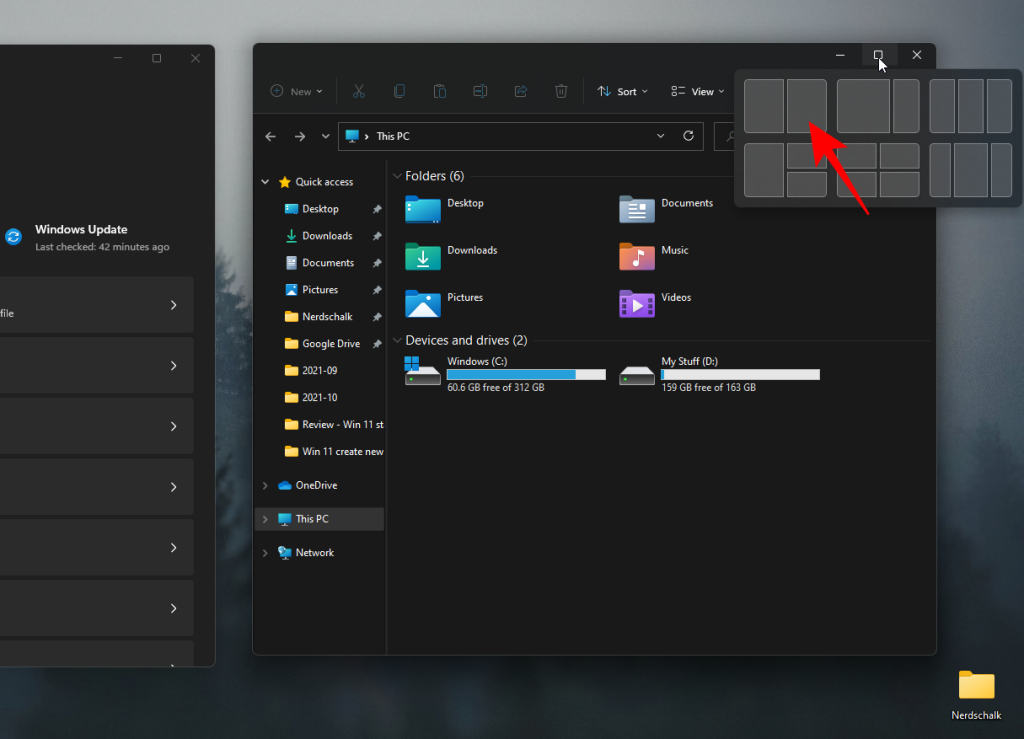
To see the new context menu option to Restart Windows Explorer, right-click on the desktop and select Show more options.
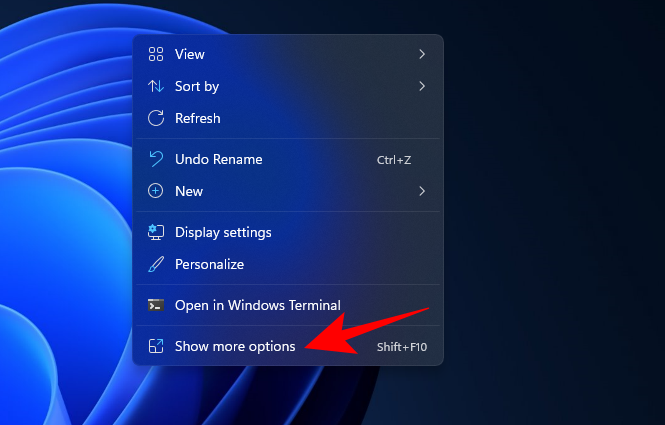
The option to Restart Explorer will be at the bottom. Hover over it to get the options to Restart Explorer Now or Restart Explorer with Pause.
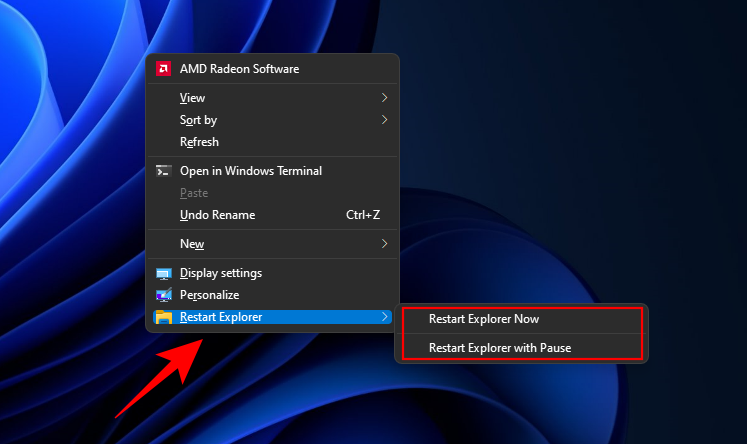
If you’d like to remove this option, create a notepad file and paste the content mentioned below in it.
Windows Registry Editor Version 5.00
[-HKEY_CLASSES_ROOT\DesktopBackground\Shell\Restart Explorer]

Then click on File > Save as.
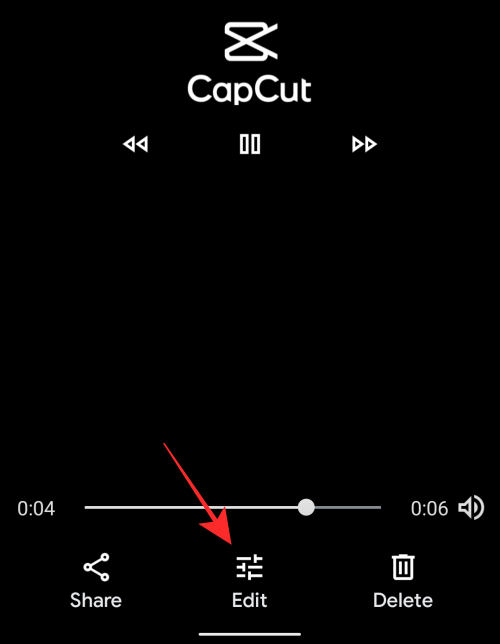
Save the file as a .reg file as we did before and save file type as ‘All files’. Then click Save.
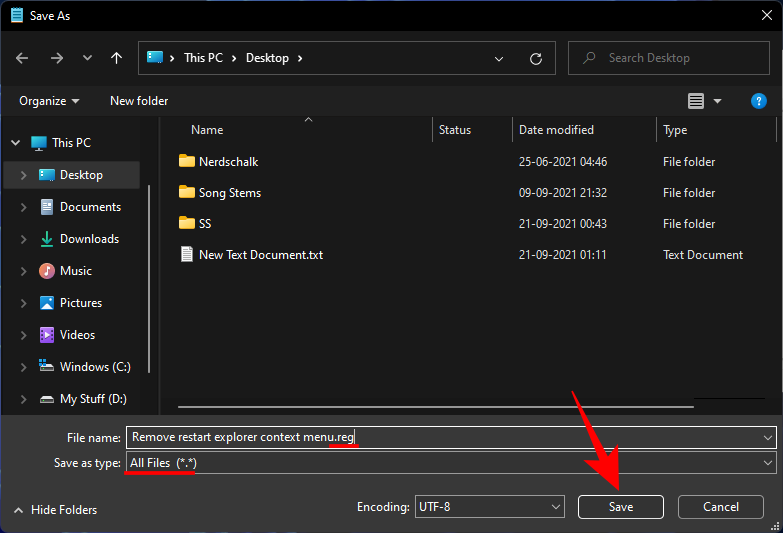
Then double-click this newly created registry file.
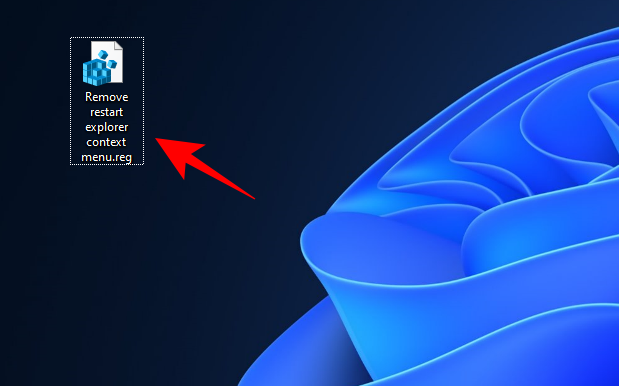
When prompted, click Yes, then click OK.

The option to restart Explorer from the Context Menu will no longer be available.
Fix: Windows Explorer has stopped working
The number one fix to Windows Explorer problems is to restart Windows Explorer using any of the methods mentioned above. This gives all the visual elements of the user shell a soft reboot, allowing them to load the data again and fix any issues that they might be having.
But there are a few other potential fixes that you may want to check out as well. Here they are:
Run SFC scan
Windows Explorer may be encountering issues due to corrupt system files. Here’s how you can check for the same and fix it:
Press Start, type cmd, and click on Run as administrator.

Now type the following command:
sfc /scannow

Then press Enter. This will start the System File Checker scan. You may have to wait a while before the process is finished.
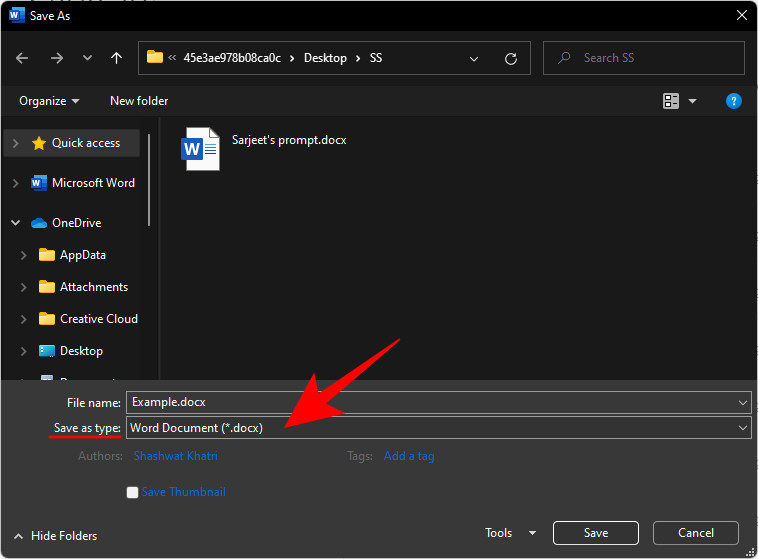
SFC Scan will find any potential problems and fix them for you.
Reboot in Safe Mode to identify the problem
Sometimes, corrupt third-party applications may be the cause of the problem. But to make sure this is the case, we have to reboot the PC in Safe Mode first. Here’s how to do so:
Press Start and click on the ‘Power’ button.

Then, while holding down the ‘Shift’ key, click on Restart.

Now, while the computer is restarting, you will be taken to the Advanced Restart options. Select Troubleshoot.
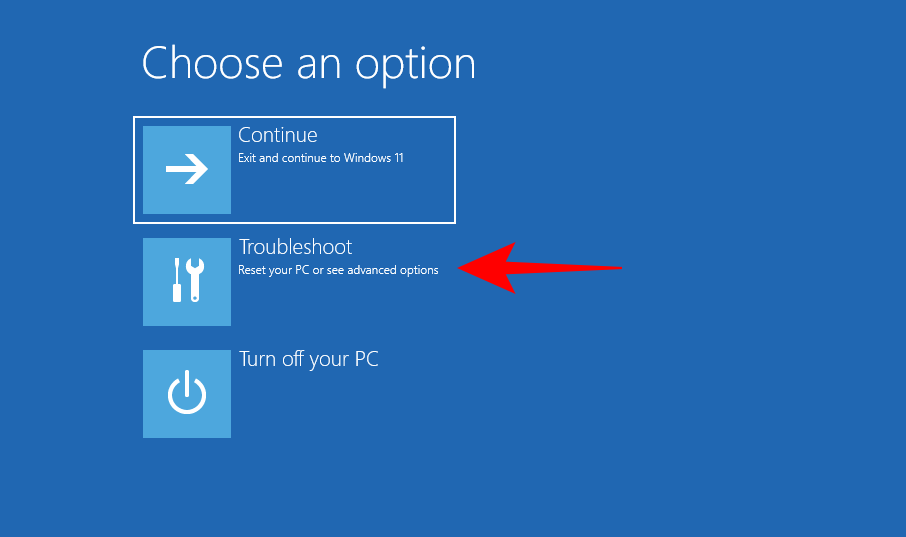
Click on Advanced options.
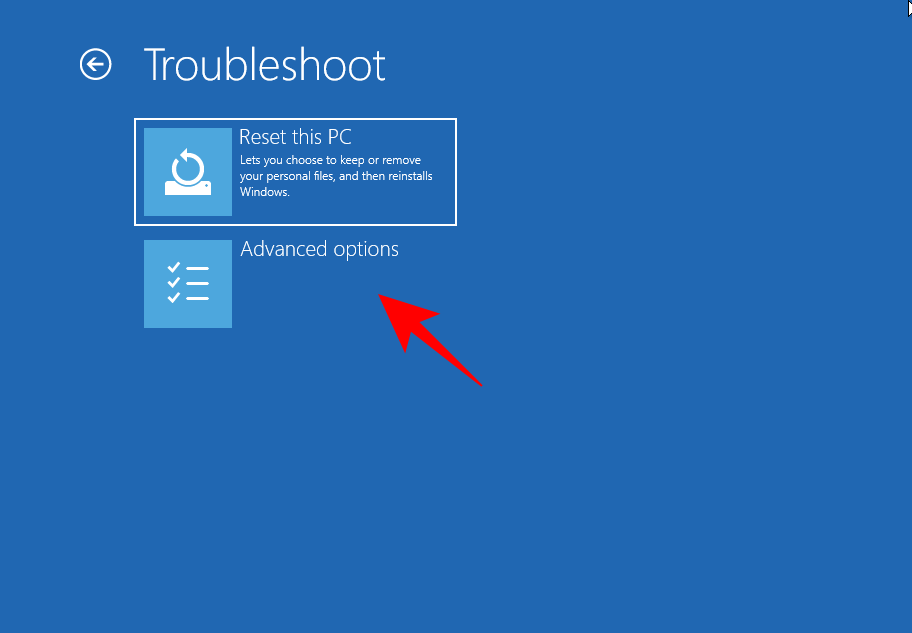
Click on Startup Settings.
Click Restart.
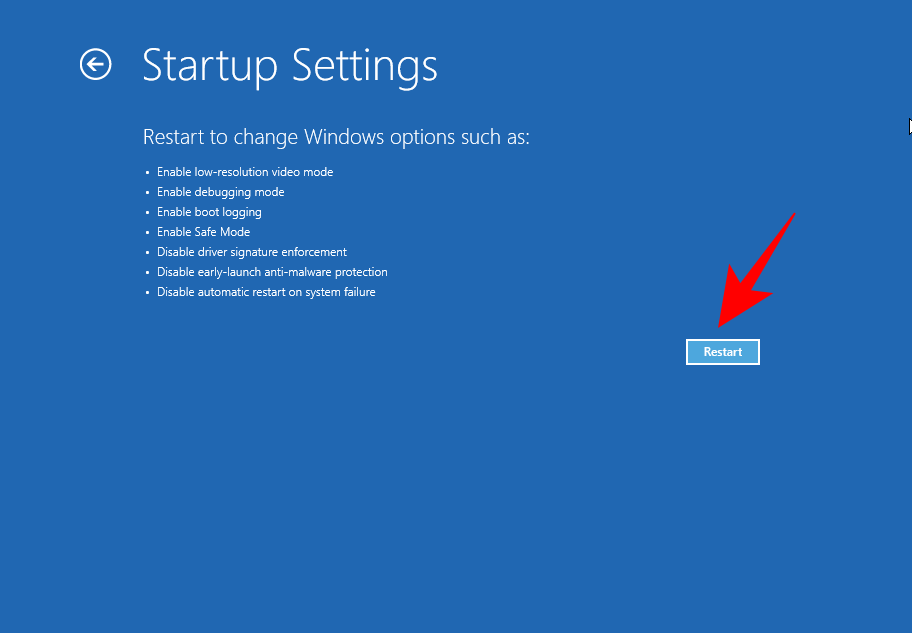
Now press the number that corresponds to Enable Safe Mode with Networking.
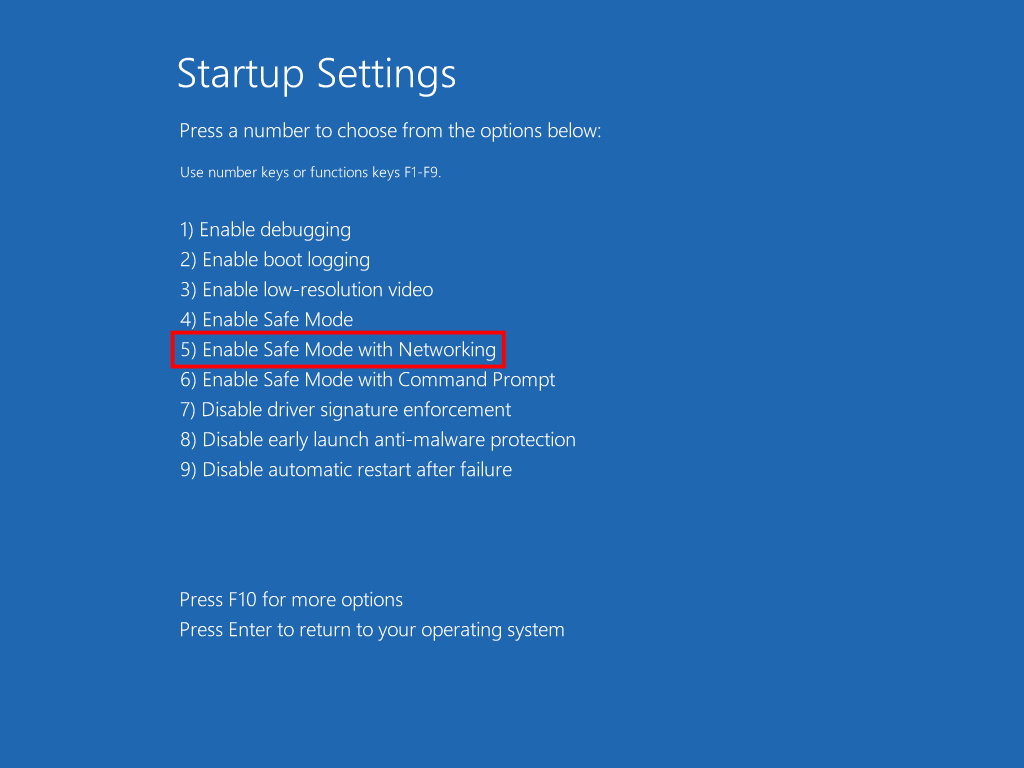
Check if the problem still persists in Safe Mode. If it does, here’s what you need to do.
Boot the computer back up normally, then press Start, type msconfig, and click on Run as administrator.
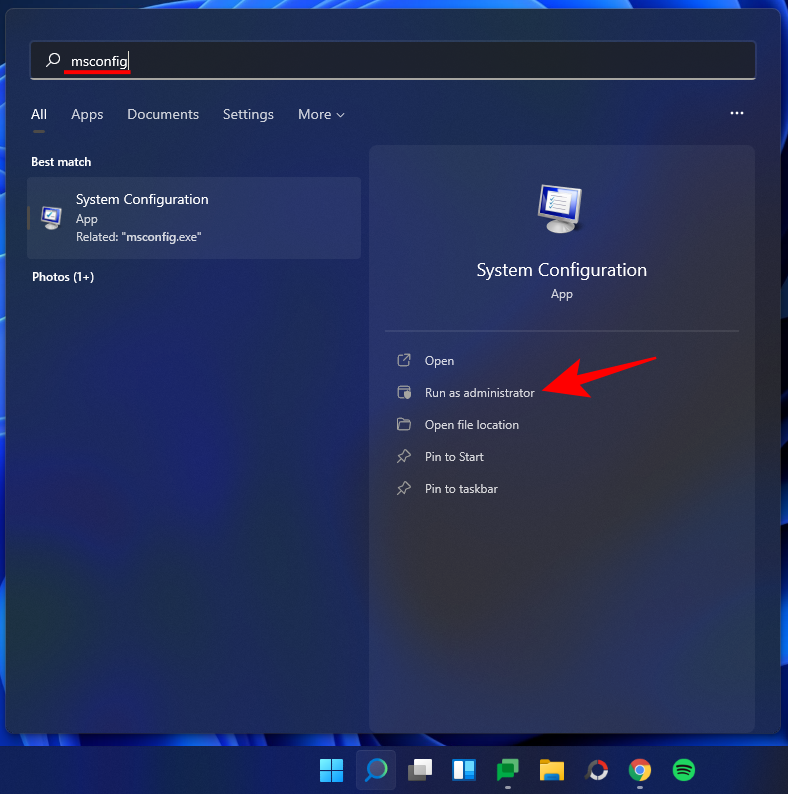
Under the ‘General’ tab, make sure to select Selective startup, but uncheck Load startup items.
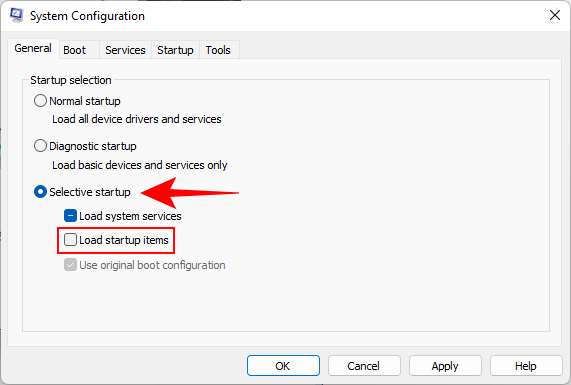
Then switch over to the ‘Services’ tab.
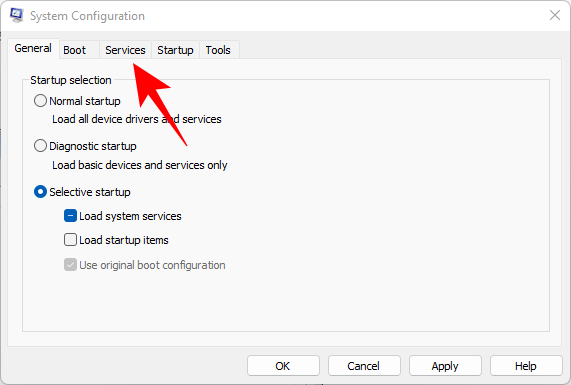
Here, click on Hide all Microsoft services at the bottom to select it. Then click Disable all.
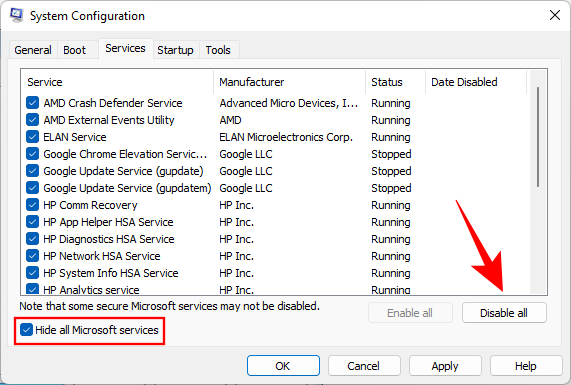
Click OK.
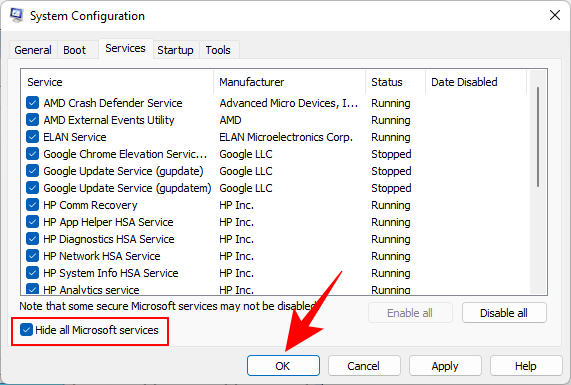
Restart your PC normally. If Windows Explorer is working fine, then the issue was caused most likely by a third-party app. You may need to hunt down exactly which program was interfering with the proper functioning of Windows Explorer.
We recommend uninstalling any recent apps that you may have installed around the time when this problem started to appear.
Scan for viruses
You should definitely run a full virus scan with your anti-virus program to find any viruses or malware lurking in your computer. Viruses come in various kinds and have the capacity to wreak havoc on your system, and a non-functioning Windows Explorer is one of the major symptoms.
Frequently Asked Questions (FAQs)
Windows Explorer is tied to a variety of visual elements that we as users interact with on a daily basis. It is only natural then to have questions about its functioning and what all you can do after you end or restart it. Here we answer a few commonly asked queries so you have all the information you need to make adjustments to Windows Explorer.
Is it safe to end Windows Explorer?
Yes, it is safe to end Windows Explorer. Doing so won’t lead to any problems. In fact, it may possibly fix the problems its elements may be experiencing. However, if you only end Windows Explorer without starting it up back again, you won’t have access to those very elements that have made Windows 11 stand out from its predecessors.
How often should I restart Windows Explorer?
Under normal circumstances, you won’t need to restart Windows Explorer at all. One of the main reasons why people restart Windows Explorer is when they’ve made changes to the registry the HKEY_CURRENT_USER registry key and need to see the changes implemented.
Other than that, Windows Explorer will require a soft reboot if one or more of its elements begin to malfunction. But if you’re constantly having to restart Windows Explorer, the problem may be found elsewhere. Refer to our fixes above to sort this issue.
Why does Windows Explorer keep crashing?
There are a few reasons why Windows Explorer may not be working as usual. But viruses within third-party applications downloaded from unknown or untrustworthy sources is one of the common cause for this. Windows Update too can introduce Explorer bugs with recent updates, especially if you’re on the Dev channel, although it’s not often the case.
Is any data lost when restarting Windows Explorer?
No, your data is not lost when you restart Windows Explorer. All your files and applications will return to the state in which they were when you restarted Windows Explorer. The only elements that are impacted are the UI elements that are dependent on Windows Explorer, such as the desktop, the Start Menu, File Explorer, and the taskbar.
Do copy paste keep working or get stopped?
Yes, the copy-paste function still keeps working when you end or restart Windows Explorer.
Can you reopen the same windows again after restarting Windows Explorer?
Yes, you can open the same windows again after restarting Windows Explorer. However, if you were using File Explorer to navigate through your drives and folders, you will have to open it up from the beginning and get to the folders you were accessing when you restarted Windows Explorer.
So these were the ways that you can restart Windows Explorer and when you should be doing so. We hope you now have a better understanding of the processes of Windows Explorer and the ways to manage them.
RELATED

